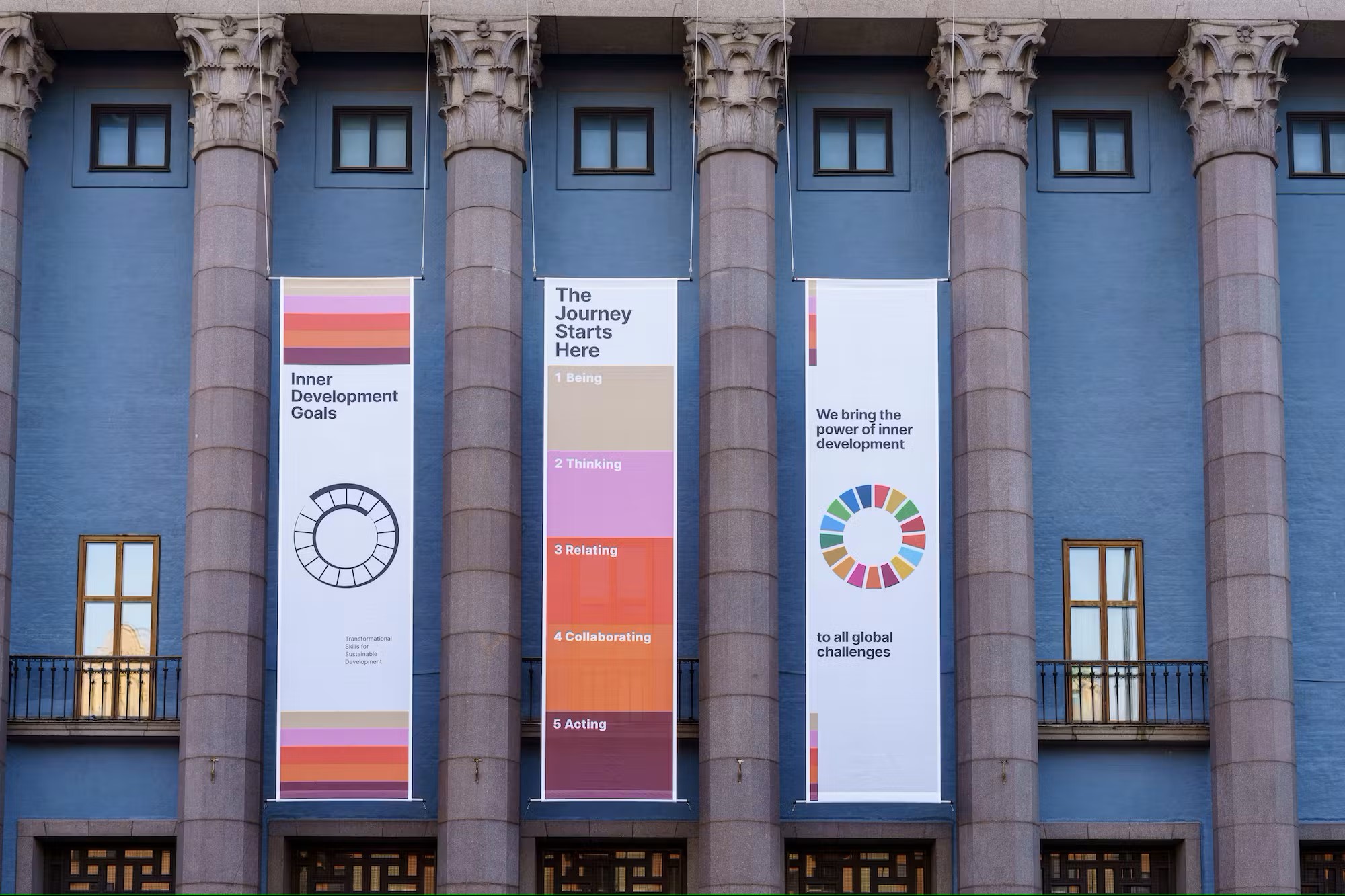Are the Inner Developments Goals a necessity for achieving the SDGs?

We are probably all aware of the Sustainable Development Goals (SDGs). Since 2015 the SDGs have been crucial for guiding our planet to a more sustainable future. Overall, the SDGs aim to leave no one behind. Examples of this are eradicating poverty in all forms, reducing inequalities, and ending discrimination. Over the years, the SDGs have been an essential global form of action for creating a more sustainable world, but sadly many goals are currently not on track. Here is where the Inner Development Goals (IDGs) might play a key role.
In 2019, the first four years since the start of the SDG framework were completed. The results showed that progress on the SDGs was going too slow to meet the targets of the 2030 global SDG Agenda. Despite progress on some SDG goals and sub-targets, we are still not doing enough. For example, the first SDG, which focuses on eliminating poverty for all, has seen various setbacks. The COVID-19 pandemic, for example, is still a leading cause of SDG delays.
Additionally, global rising inflation is also not helping. As a result of these delays, it is urgent to improve progress on the SDGs. However, some researchers and organizations argue that the SDGs are not enough. They advocate for an additional individual approach, which can (and should) lead to systematic change. This approach is characterized by the Inner Development Goals.
What are the Inner Development Goals?
So you might think, please, no more frameworks and targets… doesn’t this make it even more complex? Partly yes… but the IDGs have a refreshing approach to how we view and interact with nature and other people around us. The community behind the IDGs even suggests that achieving the IDGs is crucial for accomplishing the SDGs.
It’s important to mention, that the Inner Development Goals are led by a non-profit organization which presents the overall IDG framework. The Inner Development Goals Organization, aims to research, communicate and collect skills and qualities. Necessary for all to live purposeful and sustainable lives. They argue that, right now, humans lack the inner capacity to deal with our complex world.
And yes, dealing with such a complex world is important because it creates many challenges. An often-used term to present such a complex world is VUCA, which comes back multiple times in the book Principles of Sustainable Business by Rob van Tulder & Eveline van Mil. Respectively, it stands for Volatility, Uncertainty, Complexity, and Ambiguity. A VUCA world makes it complicated to create forecasts and efficient solutions. It raises questions such as “Who is responsible for global action?” and “How can we simplify difficult challenges?” Furthermore, a VUCA world also causes the development of wicked problems, which are problems that can’t be solved. Although this sounds pessimistic, wicked problems lack the capacity to be defined, which means they can also not be fully understood.
Therefore, solutions are unclear and unstable. Plus, they also require redefinition over time. Most wicked problems require systematic changes, which is difficult in a VUCA world. Besides that, large systematic change also requires individual participation. Therefore, individual change plays a big role. Here, the IDGs come in and play a significant role.
The Inner Development Goals framework
The Inner Development Goals present five dimensions, which include multiple necessary skills. Goal number one ‘Being’ focuses on the relationship we have with ourselves. It’s about understanding your own emotions and thoughts. Such an understanding can help us to react easily to complex problems. The second goal is ‘Thinking’, which focuses a lot on cognitive skills. It emphasizes that we should try to be aware of different perspectives and be critical when we evaluate news and make sense of the world. The third goal highlights the importance of ‘Relating’. In other words, we should aim to feel connected with others and nature. Overall, relating more to the world can create a more sustainable future.
The last two goals seem to overlap with some of the SDGs. Goal number four is called ‘Collaborating’. It highlights the importance of collaboration for progress on sustainability transitions. The last goal refers to ‘Acting’ on the IDGs. It requires individuals and governments to break old patterns, necessary for systematic change. Together, these five goals provide a framework for the inner development that is necessary if we want to accomplish the SDGs. If you would like to see a more in-depth version of the framework you can find it here.
Want to know more?
So, maybe after reading this article, the IDGs spark your interest. Well, that’s great. With this link, you can find a more in-depth video about the aim of the IDGs. You can also download the 29K app which supports mental and inner development. With this app, you can follow multiple courses and workshops, including a course specifically on the Inner Development goals.
Overall, the IDGs can provide a good framework for what must be done on an individual level, if we want to accomplish the SDGs. In this way, it supports the SDGs, but also offers a new way of looking at how we can increase individual awareness. Personally, I definitely think the IDGs should be taken seriously when we think about sustainable development since it is a key tool in the change.
Sources
- https://www.weforum.org/agenda/2022/09/un-sustainable-development-goals-progress-report/
- Principles of Sustainable Business (Book by Rob van Tulder & Eveline van Mil, 2023).
- https://www.innerdevelopmentgoals.org
- https://29k.org/about
